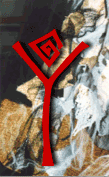Allegory, rethinking, new or new reading – such words can be often come across in the articles dedicated to modern art, fashion trends and various areas of design. This article also concerns a new approach to the technology that has been used in textile industry already for some decades and which, surprisingly, rooted much deeper, since it originated thousands of years ago. The oldest non-woven material – felt was reborn and transformed in the 20th century due to the whole industry that produces a huge range of materials – for clothing, agriculture, medicine, construction. Now non-woven and non-knitted fabric is manufactured by using modern equipment in a variety of ways, including a needle-punched method, when the material is created due to adhesion of textile fibers of any origin (natural, artificial, synthetic) by means of numerous needles with barbs.
The art designer Irina Yega became interested in the capabilities of such equipment as early as in the 1980s, when she was a third-year student at Stroganov Moscow State Academy of Arts and Industry. Unusual nature of textures and techniques, the freedom of plasticity, and most importantly, compared with other techniques, the fast path from the concept to implementation, then decided the fate of her diploma, and finally, her designer’s fate… Her passion for technology led to the creation of the workshop “YAGA”, and the results of the experiments showed that by this very method it is possible to get designer textiles like nothing else.
Having received two patents in 2001, Irina continued improving her copyrighted technique, making sure that the cloth can be made dense and translucent, with a vintage effect, with mysterious flickering of brocade, with the inclusion of printed elements, with a complex geometry or abstract graphics, subjecting the material to the designer’s concept like in painting, only instead of brushes, paints and palettes, the designer uses various fabrics and yarns. In such textile art-objects there is not stitching or gluing, the materials are joined by mechanical “fusion”. Thus, there is no sensation of application, the borders between the various materials forming the cloth are not visible.
And when only yarn is used, the result is an airy plastic product that is capable to compete with a traditional fabric in practicality! By the way, it is important to note that this non-woven “fabric” is absolutely adapted to our modern life: it can be washed, dry cleaned, ironed. There are no “surprises” such as deformation, shrinkage, and colour fading. For a designer working with interiors, such textile is a real find. And in clothes and accessories manufacture it allows to create unique models. The aesthetic effect and emotional impact of the cloth designed by this technique, undoubtedly differ from the common textiles. So, this is a big plus in the face of hard competition.
Recent developments conducted by Irina have shown another opportunity that increases the attractiveness of Yaga-technology – the use of sublimation printing. Having seen the models of the latest collection “Ex Libris”, you feel again the link of times, styles and traditions. Rich in colour, as if aged by time, cloth surface creates the illusion of being a museum exhibit, and in combination with a laconic cut gives a magical result: the comfortable, unique clothing that is beyond fashion. |
